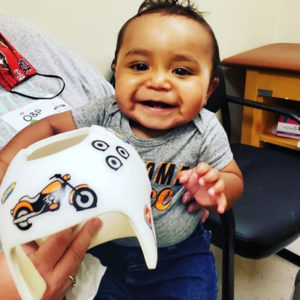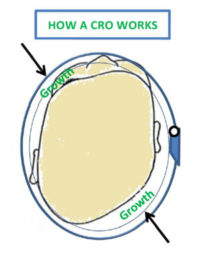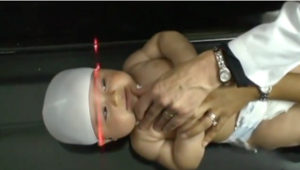
After spending months curled up in a tight space only to travel through a narrow birth canal on their way to enter the world, it’s not surprising almost every baby is born with a slightly misshapen head. Over the next few weeks, as the soft plates in their skull begin to harden and come together, their cute little head eventually rounds out.
However, if a baby sleeps in the same position or turns their head to one particular side all the time, the pressure can flatten these soft plates. While most causes of flat head syndrome are not dangerous, if the condition does not resolve on its own, your pediatrician or specialist may recommend helmet therapy. A cranial helmet is an effective, fast, and painless way to address the condition.
If you’re concerned about your baby’s head shape, it’s vital to talk with your pediatrician and learn about the benefits of cranial therapy. In the meantime, here are some essential facts to keep in mind and ways you can help prevent flat spots from occurring.
There are three reasons why your baby may need a cranial helmet
Flat head syndrome or a misshapen head can be caused by a number of factors, including genetics, issues at birth or external factors. The most common reasons a doctor may prescribe a baby helmet include:
- Brachycephaly – All parents know that placing a baby on their back to sleep is one of the most effective ways to prevent SIDS (Sudden Infant Death Syndrome). But when an infant sleeps in the same position all the time, the back of their head can flatten or indent. Providing plenty of tummy time while they’re awake helps ease pressure on the skull and builds their neck muscles so they can better lift their head.
- Plagiocephaly – If a baby has plagiocephaly, the flattening occurs on one side of their skull so their head takes on an asymmetrical appearance. In addition, the facial features and ears may be misaligned. You can reduce the risk of plagiocephaly by placing your baby in different areas of their crib each night if they naturally pivot their head one way or another. Tummy time and switching your arms as you hold your baby help as well.
- Scaphocephaly – Unlike the other two conditions, scaphocephaly is a congenital condition diagnosed at birth. If a baby has scaphocephaly, the bones in their head fuse together before they should. This abnormal fusion causes the skull to appear long and narrow. In rare cases, if scaphocephaly is not treated early in infancy, it can impact normal brain growth.
Cranial therapy for babies is the safest way to treat flat head syndrome

A cranial helmet works by stimulating the natural growth of your baby’s head. The helmet fits snuggly on the prominent areas of the skull to inhibit growth and loose in other areas to encourage the flattened plates to fill in the empty spaces. The soft spots that have been damaged can now catch up to the rest of the skull plates.
Pediatricians recommend treating babies for flat head syndrome between four and seven months of age. Most infants will wear their cranial helmet between 20 and 22 hours a day for three to six months. Because the helmet is specially fitted to your child, their treatment is pain-free and comfortable.
Fitting your child for a baby helmet is simple

At Orthotic & Prosthetic Lab (O & P) in St. Louis, our cranial remolding orthosis team can ensure the perfect fit to maximize outcomes in the shortest amount of time. During your child’s consultation, our clinicians use our cutting-edge STARscanner® system, comprised of four eye-safe lasers and eight cameras, to accurately capture your baby’s head shape. The entire process takes just two seconds, making it ideal for wiggly babies and nervous parents.
If you’re concerned about your baby’s head shape, don’t wait to get the answers you need! With a pediatrician referral, O & P can provide a free evaluation and 3-D head shape data to help you and your child’s healthcare team determine the next steps for treatment. To learn more about cranial helmet therapy, contact O & P today at (314) 475-3621.
